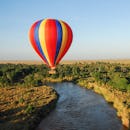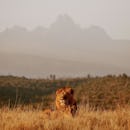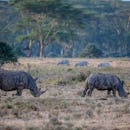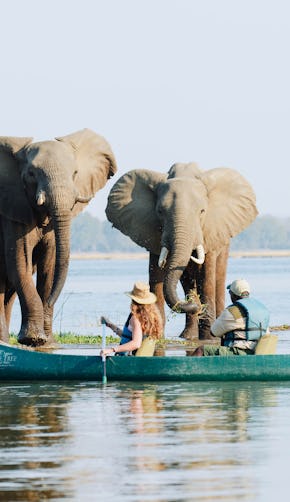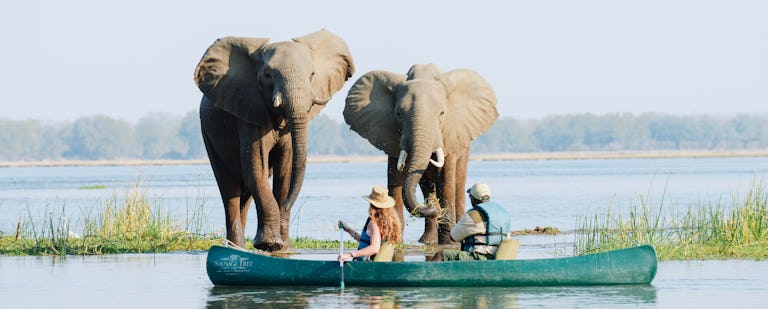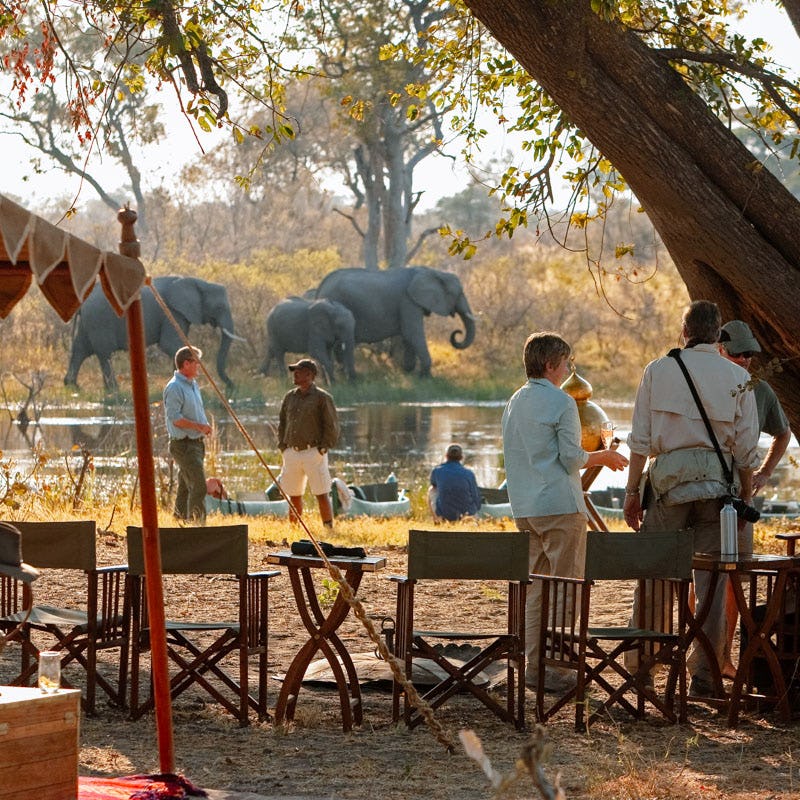If the African safari world had a ‘who’s who’, the Big Five would definitely occupy the top spots. This quintet of creatures has become truly iconic and, more often than not, dominate bucket list sightings for many safari-goers.
Made up of lion, leopard, rhino, elephant and the Cape buffalo, the ‘Big Five’ was originally coined by hunters as they were considered the most difficult of Africa’s big game to shoot while on foot. While the poaching of these animals in protected areas remains a problem, the name is now more commonly used to describe a collection of wildlife, which are among the most coveted sightings on the continent.
On safari in Kenya, you’ll be taken care of by some of the best guides in the business, who know how to read every track and trace left behind, meaning you stand a good chance of seeing the Big Five whilst on game drives. You’ll learn about the animals’ fascinating traits and habits, whilst exploring their territory and seeing the Big Five undisturbed and in their natural habitat.
Kenya is one of the most famous destinations for seeing the Big Five in the wild and, in this article, we’ll be breaking down just where to look for them.

Lions
Lions move and function within prides of varying sizes and are extremely social animals. Lions are apex predators and their movements are most often ruled by the need to hunt, followed by long periods of rest – they spend between 16 and 20 hours a day sleeping or resting. During daytime game drives, prides of lion will often be found in the shade of a bush or tree, snoozing as their food digests and conserving energy for their next hunt.
According to most recent estimates, there are approximately 2,000 lions in Kenya, however, this number does fluctuate due to factors like poaching, human-wildlife conflict, habitat loss and conservation efforts. These big cats can be seen year-round throughout Kenya’s many protected parks and reserves, but the Masai Mara is home to one of the greatest concentrations of lions in Africa. Between August and October, the hordes of the Great Migration spill over the Masai Mara’s grasslands, drawing lions in their droves – the clash makes for truly heart-wrenching scenes. There are plenty of outstanding opportunities to see prides swaggering across the open, acacia-speckled savannah.
Making up Kenya’s largest parks, Tsavo East and West are home to the unique Tsavo lions, which have long been known for their ferocity, while Samburu National Park has impressive numbers of lion who stalk across the broad, dry plains and quench their thirst at the great Ewaso Ng’iro River. Other notable lion-spotting areas include Ol Pejeta, Amboseli, and Nairobi National Park, where the city skyline acts as a startling backdrop.

Elephants
Elephants are highly social animals and typically live in matriarchal herds made up of related females and their offspring. They are constantly on the move in search of their next food or water source and often travel great distances between them; they require huge amounts of water (elephants drink up to 150 – 200 litres a day) and spend up to 16 hours of their day feeding. Elephants dine on a wide variety of plant material including grasses, leaves, bark, fruit and roots. They also love to bathe in water and wallow in the mud, which helps keep them cool, protects their skin from the sun and removes parasites. Elephants also have very short sleep cycles, typically adding up to two to four hours a day, which often take place in short bursts.
Kenya is home to around 36,000 to 40,000 elephants, a population that has remained fairly stable due to successful conservation efforts. In a striking setting beneath snowy Mount Kimilanjaro, Amboseli is known as the ‘Land of the Giants’, famous for its giant herds of elephants, which are among the biggest in Africa. The nearby Tsavo is home to the last ‘Big Tuskers’ in the world, so named for their tusks that can weigh in at over 50kg and skim the ground as they walk.
Samburu’s vast Ewaso Ng’iro River is a vital water source for multitudes of elephants and, specifically during the dry season, herds travel for miles to reach its banks and drink from the call water. Kenya’s dense forests and highland moors are also home to forest elephants, which are slightly smaller than their savannah cousins and amazing to see in the wild.

Cape Buffalo
Despite their docile appearance, the Cape buffalo is actually considered to be one of the most dangerous animals on the plains of Africa due to their unpredictable nature and unshakable willingness to defend themselves and their herd. Buffalos are highly social and congregate in herds that can range from a few dozen to several hundred in size. These herds are constantly on the move, travelling between grazing grounds and water sources, and prefer to stay within reasonable distance of the latter as they are very dependent on water. Buffalos consume a great deal of water but also enjoy wallowing in mud to cool down and protect their skin from parasites, which they do during the hottest part of the day.
There are approximately 30,000 to 35,000 Cape buffalo in Kenya, widely distributed throughout national parks, reserves and other protected areas. The open plains and riverine forests of the Masai Mara are very attractive for buffalo while the diverse landscapes of Tsavo are also home to incredible numbers. The wild forests and moorlands of Aberdare National Park offer a unique setting in which to observe these incredible creatures, especially in more secluded areas.

Leopard
Known for their stealth, strength (leopards are able to take down prey much larger than themselves) and adaptability, leopards are highly territorial, solitary creatures. They are phenomenal yet opportunistic hunters with a diet that includes everything from antelope to fish. Leopards have the ability to tug a successful hunt into a nearby tree in order to keep it safe from scavengers or other big cats, allowing them to feed leisurely over a few days. Leopards primarily hunt during the night and spend their days resting high in trees or rocky outcrops, which helps them keep away from fellow predators and spot potential prey.
It is estimated that there are between 1,000 to 2,500 leopards in Kenya, however precision is difficult due to their elusive nature and vast, varied habitats. The Masai Mara is one of the best places to see them in Kenya as its combination of riverine forests and rocky outcrops are ideal. Your guide will likely take you along the Mara or Talek River, where leopards are commonly sighted in the trees. The private conservancies in the Laikipia region are also excellent as you’re able to embark on night drives, making leopard sightings even more likely. Meru National Park also offers exceptional leopard sightings.

Rhino
There are two distinctive types of rhino, including black, who feed on leaves, branches and shrubs, and white, who primarily feed on grass. Black rhino prefer areas with dense vegetation while white rhino are typically found in flatter grasslands, savannahs and open woodlands. White rhinos also need access to a great deal of water, both for drinking and mud wallowing.
Kenya has made significant efforts in rhino conservation, particularly through anti-poaching measures and habitat protection, and is now home to between 1,200 – 1,500 rhinos. In Laikipia, you’ll find almost half of Kenya’s black rhino (along with the rest of the Big Five) and Ol Pejeta is a sanctuary for the last two northern white rhino in the world, which you can see up-close. Meru National Park is another beacon for conservation with consistently rising numbers of black and white rhino, while Lake Nakuru attracts incredible numbers of rhino.
Best time to see the Big Five in Kenya
Overall, July to September is the best time to visit Kenya’s national parks and reserves as the water sources are at their most reduced, meaning wildlife congregates around the remaining waterholes and rivers. In conservancies outside the Masai Mara and areas like Laikipia, this is also an amazing time for walking safaris where you may be able to spot members of the Big Five on foot.
How to do it?
In Kenya, Big Five sightings can easily be combined with a more off-the-beaten track experience in Matthew’s Range on a trip to the north. Alternatively, spend a few days on the coast of Diani for a little bit of R&R with a trip like this. On the other hand, you could add on some time in the wilds of Tanzania, catching Great Migration river crossings in the Serengeti, before seeing the Masai Mara’s iconic wildlife.
When it comes to the Big Five, Kenya is one of the most prolific locations for seeing these creatures in the wilderness. Its wide-open spaces are ideal for spotting the savannah’s most iconic residents and Kenya’s incredible conservation projects aim to ensure the protection of and continuous increase in numbers. There’s no time like the present to begin planning a trip to Kenya to see the Big Five for yourself.











